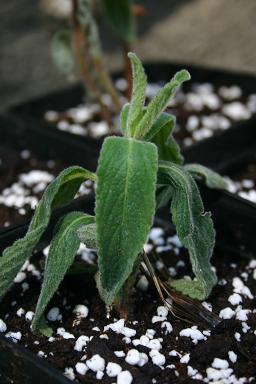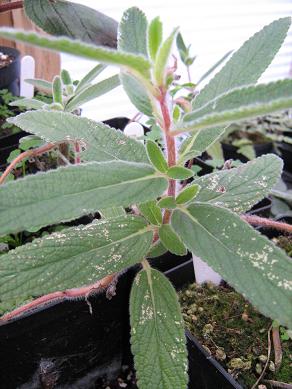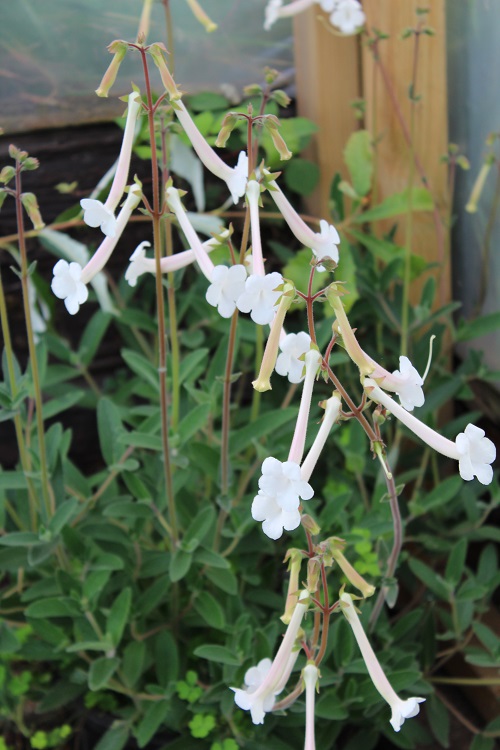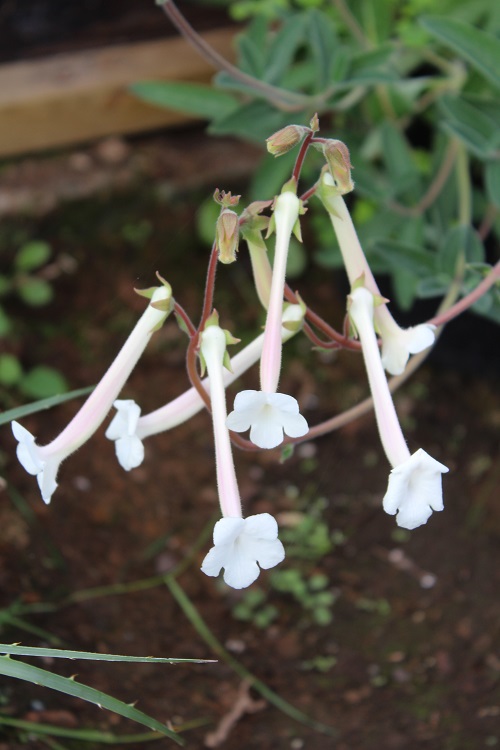 |
I bought this from the Plant Delights in the USA because it has turned out to be much hardier there than expected. So far it has produced long and rather dull stems of leaves in the greenhouse
but not a sign of a bud. It may be that it is adapting to its first year here, and will burst into white bloom next year (difficult to see much point in
it if it doesn't). I have just read that it needs very bright light to stay compact and bloom, which would explain its sterile straggle in the greenhouse, which is heavily shaded. This year it went straight out into the greenhouse as soon as the shoots appeared, and the growth has been stronger and lusher as a result - clearly a lover of the sun. My, how it has grown. And all around me, growers have regaled me with tales of its marvellous flowering, its accommodating disposition etc. etc. Naturally, for me it has remained a tatty stack of lustre-less leaves and not a single flower has it squeezed from the summit of its stems. Couldn't you just scream! Plant Delights catalogue says: "One of the real joys of gardening is finding a plant that you think can't be hardy and then discovering that it becomes an easy-to-grow staple in your garden. Such is the case with the hardy gloxinia, Sinningia tubiflora. Forming large underground tubers, Sinningia tubiflora not only lives, but spreads nicely in our rock garden. All summer long, the green, felty leaf clumps are topped with 20" tall spikes of 6" long, very fragrant, pure white flowers...somewhat resembling Hosta plantaginea. The hummingbirds and visitors alike go nuts when they see this in our gardens. You must grow this plant, even if you have to use containers in the North." Writing in the New Plantsman in 1994, Brian Mathew says of the flowers: "In addition to their attractive appearance they are deliciously scented, a few blooms being enough to fill the conservatory with a tangy, lemon-like fragrance which has also been likened to that of the tuberose (Polianthes tuberosa). In fact, very few members of the Gesneriaceae are scented, most of them apparently relying on bright fllower colours to attract pollinators... After flowering in autumn, the plants are encouraged to go dormant by drying them out, then the stems can be cut off and the pots stored in a dryfrost free place for the winter,... At repotting time ... it will be found that there is a substantial harvest of tubers since the plant behaves rather like a pptato in producing stolons with tubers at their tips... Sinningia tubiflora is by no means a new plant in cultivation. It was first described as an Achimenes by Sir William Jackson Hooker in 1842 in Curtis's Botanical Magazine (69; t. 3971) accompanied by a very attractive engraving from a painting by W. H. Fitch. The specimen used for this ilustration came from Dublin and was said to be 'one of the many interesting novelties, reared by Mr. Moore of the Glasnevin Botanic Garden from seeds, sent by Mr. Tweedie from Buenos-Ayres'." In Curtis's Botanical Magazine, Hooker added: "I do not think, however, the species inhabits any portion of the Argentine provinces, at least I have never found it in any of the numerous collections I have received from Mr. TWEEDIE. It is probable he obtained seeds from South Brazil, or, it has been suspected, from Paraguay." |
|
| 19th April 2008 | ||




